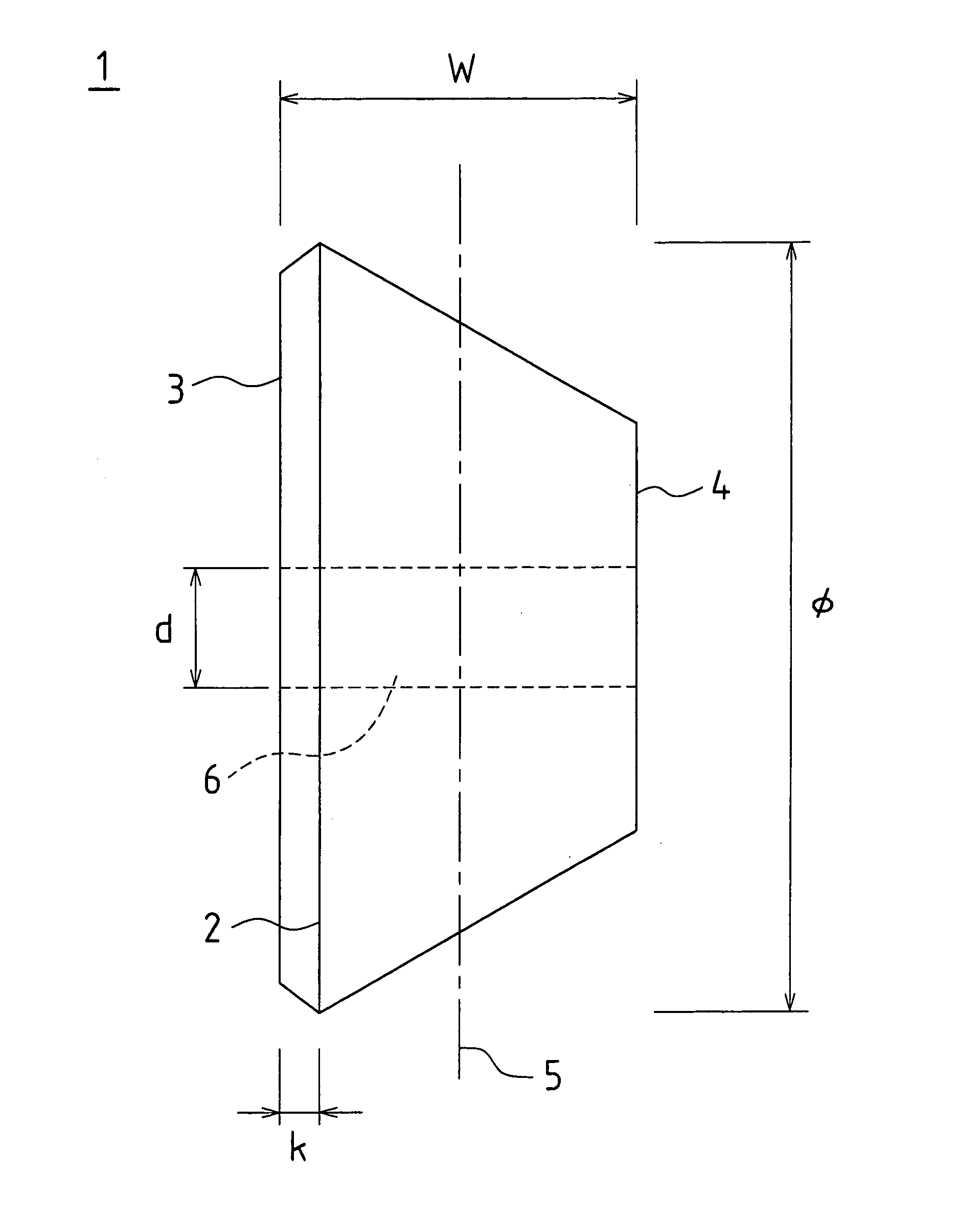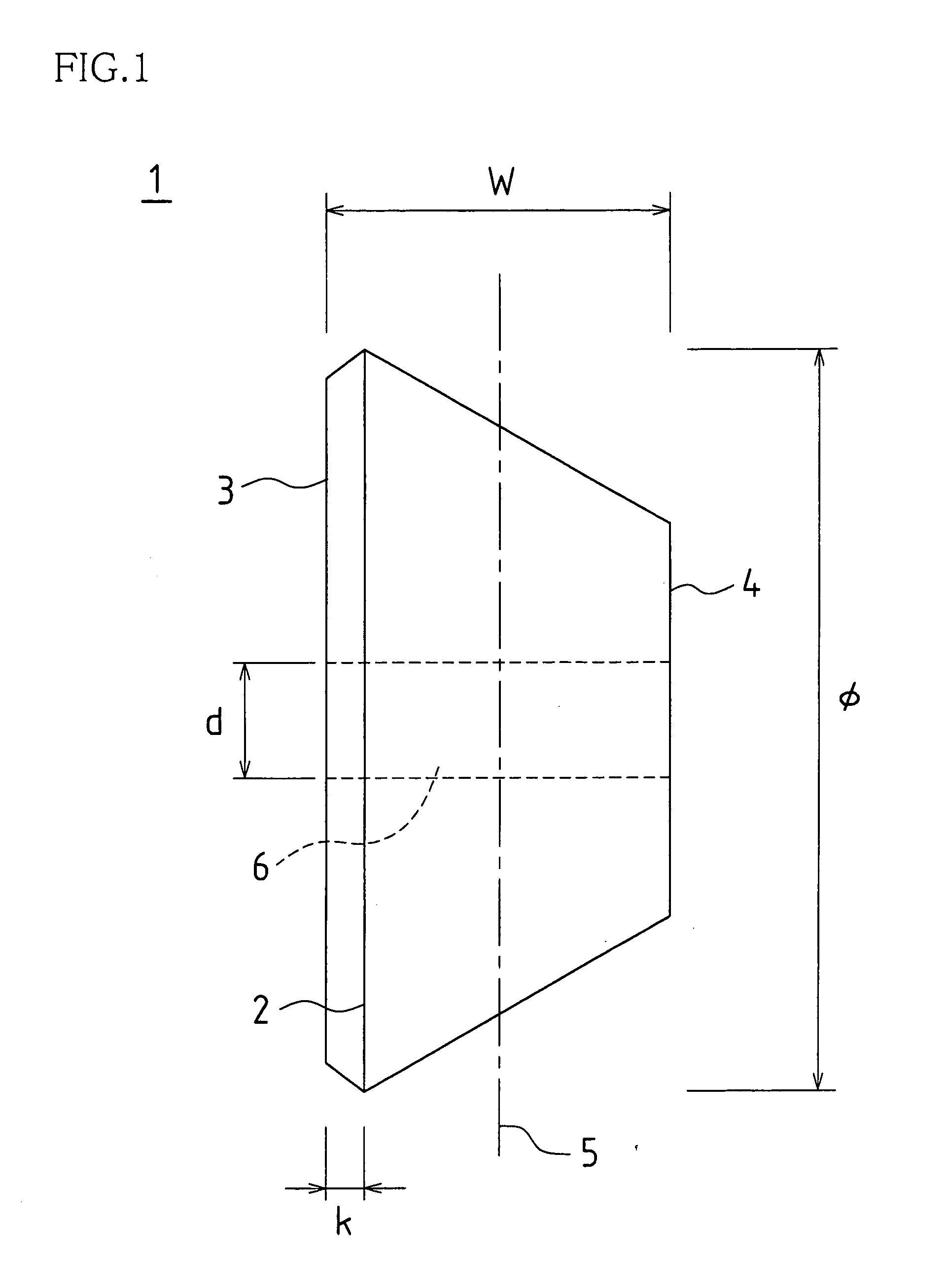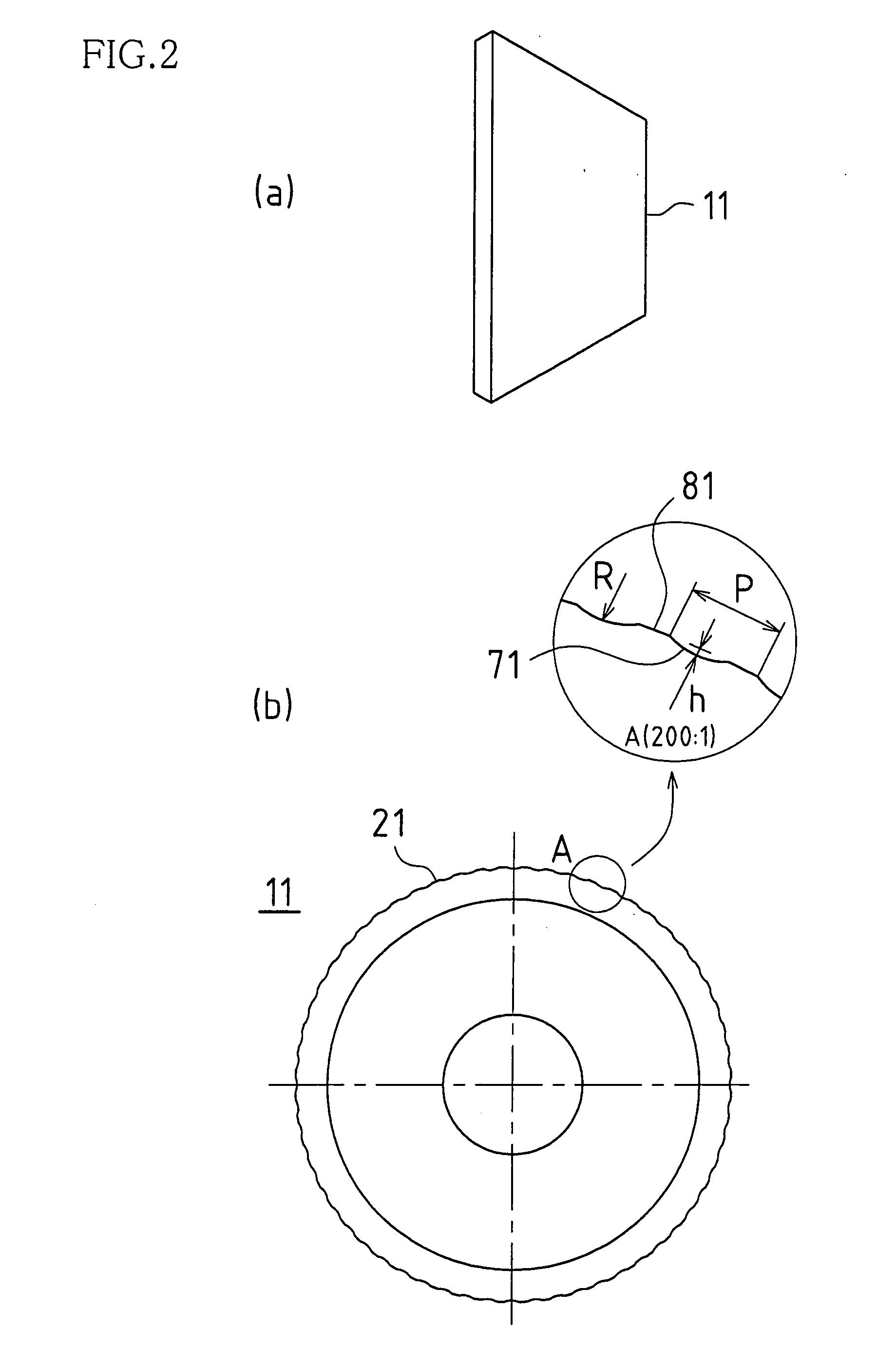Cutter wheel, device and method using the cutter wheel, method of dividing laminated substrate, and method and device for manufacturing cutter wheel
a technology of cutter wheels and cutter wheels, which is applied in the direction of manufacturing tools, transportation and packaging, paper/cardboard containers, etc., can solve the problems of difficult removal of all, corrosion of the metallic parts of the organic el device, and not always preferable dicing
- Summary
- Abstract
- Description
- Claims
- Application Information
AI Technical Summary
Benefits of technology
Problems solved by technology
Method used
Image
Examples
embodiment 1
[0191] FIGS. 25(a) to (d) are cross sections that illustrate each step in a second method of scribe-breaking the bonded glass substrate 10 using a scribe-breaking apparatus provided with a glass cutter wheel 1 of the present invention. It should be noted that, for convenience, the glass substrate of one side of the bonded glass substrate, which is a liquid crystal mother substrate, formed by bonded a pair of glass substrates facing together is taken as glass substrate 10A, and the glass substrate of the other side is taken as glass substrate B in the following explanation.
[0192] (1) First, as shown in FIG. 25(a), the bonded glass substrate 10 is mounted on a first scribing apparatus with the glass substrate 10A of the bonded glass substrate 10 facing up, and a scribe line Sc is formed on the glass substrate 10A by scribing using the cutter wheel 1 (or 15 / 16).
[0193] (2) Next, the bonded glass substrate 10 on which the scribe line Sc has been formed on the glass substrate 10A is turn...
working example 1
[0200] FIGS. 26(a) to (i) are process drawings for describing Working Example 1 of the present invention. Furthermore, FIG. 27 includes schematic drawings that show a configuration of the apparatuses used in such a process. FIG. 27(a) shows an example in which the apparatuses of the process are configured in a simplified line. And FIG. 27(b) is an example in which the apparatuses are configured around a transport robot. The present invention is applied to a method of scribe-breaking a flat display panel mother glass substrate 80 formed by bonded together glass substrates that are one kind of a brittle material substrate. The glass substrate on one side of the flat display panel mother glass substrate 80 is taken as glass substrate 80A, and the glass substrate on the other side is taken as glass substrate 80B, and the material of the glass of the glass substrate 80A and the glass substrate 80B is non-alkali glass for example. Furthermore, the cutter wheel used is the cutter wheel 16 ...
working example 2
[0212] The following is an explanation of a working example in which the present invention is applied to a method of scribe-breaking a reflective-type projector substrate formed by bonded together a glass substrate that is one kind of a brittle material substrate and a silicon substrate. The glass substrate on one side of the reflective-type projector substrate is taken as glass substrate 80A, and the silicon substrate on the other side is taken as silicon substrate 80C, with the material of the glass of the glass substrate 80A taken as a non-alkali glass for example. Furthermore, the cutter wheel used is the cutter wheel 16 of FIG. 8 that can obtain cracks in which the depth of the vertical crack is periodically varied within the glass substrate.
[0213] The vertical cracks obtained during scribing the silicon substrate 80C with the cutter wheel 16 of FIG. 8 are continuously shallow.
[0214] Consequently, by only substituting the silicon substrate 80C for the glass substrate 80B of FIG...
PUM
| Property | Measurement | Unit |
|---|---|---|
| diameter | aaaaa | aaaaa |
| diameter | aaaaa | aaaaa |
| diameter | aaaaa | aaaaa |
Abstract
Description
Claims
Application Information
 Login to View More
Login to View More - R&D
- Intellectual Property
- Life Sciences
- Materials
- Tech Scout
- Unparalleled Data Quality
- Higher Quality Content
- 60% Fewer Hallucinations
Browse by: Latest US Patents, China's latest patents, Technical Efficacy Thesaurus, Application Domain, Technology Topic, Popular Technical Reports.
© 2025 PatSnap. All rights reserved.Legal|Privacy policy|Modern Slavery Act Transparency Statement|Sitemap|About US| Contact US: help@patsnap.com



